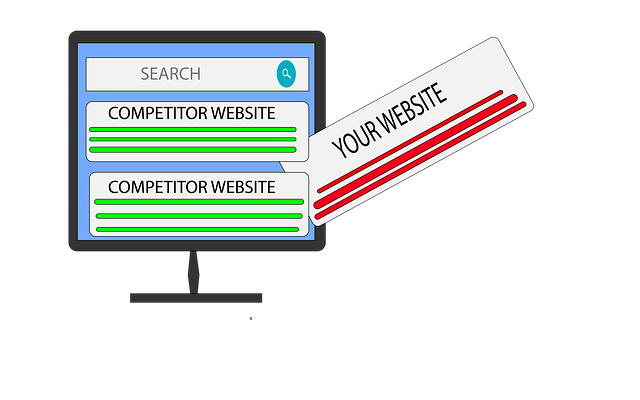E-commerce chatbots have significantly improved customer engagement and operational efficiency by providing instant, AI-driven interaction and support around the clock. These advanced systems streamline the online shopping experience through personalized product recommendations, immediate assistance, and strategic guidance at key decision points in the buying journey. They enhance satisfaction by effectively mimicking human conversation with natural language processing capabilities, thereby increasing sales performance and fostering customer loyalty. E-commerce businesses can track the effectiveness of chatbots using metrics like resolution rate, customer satisfaction scores (CSAT), natural language understanding (NLU) precision, average handle time (AHT), and first contact resolution (FCR). By analyzing these metrics alongside the costs involved in developing, implementing, and maintaining chatbots, companies can conduct a Return on Investment (ROI) analysis to assess the financial benefits, including operational savings and revenue generated. This holistic approach ensures that e-commerce chatbots not only handle interactions efficiently but also contribute significantly to the overall success of online retail strategies.
Exploring the integration and impact of AI-driven chatbots within the dynamic realm of e-commerce, this article delves into the pivotal role they play in enhancing customer engagement. We’ll navigate through essential metrics that gauge their performance, offer step-by-step guidance on calculating your AI chatbot’s return on investment (ROI), and assess the quality of interactions to ensure they drive meaningful customer experiences. Furthermore, we’ll examine the long-term implications of chatbots for e-commerce businesses looking to innovate their growth strategies. E-commerce chatbots stand at the forefront of this transformation, offering a unique blend of automation and personalized service that can significantly elevate your business.
- Understanding E-commerce Chatbots and Their Role in Customer Engagement
- Key Metrics for Evaluating AI Chatbot Performance
- Steps to Calculate the Return on Investment (ROI) for Your AI Chatbot
- Analyzing Chatbot Interactions: Quality Over Quantity
- Long-term Impact and Sustainability of Chatbots in E-commerce Growth Strategy
Understanding E-commerce Chatbots and Their Role in Customer Engagement

E-commerce chatbots have become a pivotal tool for online retailers looking to enhance customer engagement and streamline interactions. These AI-driven systems are designed to simulate human conversation, providing instant assistance and guidance to shoppers navigating through a vast array of products. By leveraging natural language processing and machine learning algorithms, e-commerce chatbots can understand customer inquiries, offer personalized recommendations, and even complete transactions, thus removing friction from the shopping experience. This not only leads to increased customer satisfaction but also drives sales by effectively engaging potential buyers at critical touchpoints of their purchasing journey.
The role of e-commerce chatbots extends beyond mere customer service; they are integral to creating a seamless and immersive online shopping environment. They can operate 24/7, offering round-the-clock support without the need for human intervention. This constant availability ensures that customers receive immediate assistance, which is crucial for maintaining high engagement levels. Furthermore, chatbots can gather valuable data on customer preferences and behaviors, enabling retailers to tailor their strategies and offerings accordingly. By continuously adapting to customer interactions, e-commerce chatbots contribute significantly to the personalization of the shopping experience, thereby fostering loyalty and encouraging repeat business.
Key Metrics for Evaluating AI Chatbot Performance

When evaluating the performance of e-commerce chatbots, it’s crucial to consider a range of key metrics that reflect both user satisfaction and operational efficiency. One primary metric is the resolution rate, which measures the percentage of customer inquiries fully resolved by the chatbot. A high resolution rate indicates that the chatbot can handle a significant number of queries without human intervention, thereby enhancing response times and improving customer experience. Another essential metric is customer satisfaction scores (CSAT), which gauge how satisfied users are with their interaction with the chatbot. High CSAT scores suggest that the chatbot is effectively meeting user needs and providing helpful responses.
In addition to resolution rate and CSAT, e-commerce chatbots should be assessed on their natural language understanding (NLU) capabilities. Metrics such as intent accuracy and entity recognition precision reflect the chatbot’s ability to correctly interpret user queries. High scores in these areas demonstrate that the chatbot is effectively processing natural language, which is vital for providing accurate and relevant assistance. Furthermore, monitoring the average handle time (AHT) provides insight into the chatbot’s efficiency. A lower AHT, compared to human agents, can indicate a well-optimized chatbot that saves time and resources for the e-commerce business. Lastly, tracking the chatbot’s first contact resolution (FCR) rate helps in understanding if users’ issues are resolved during their initial interaction with the chatbot, which is a strong indicator of user retention and customer loyalty in the competitive e-commerce landscape.
Steps to Calculate the Return on Investment (ROI) for Your AI Chatbot

In the realm of e-commerce, integrating AI chatbots can significantly enhance customer engagement and streamline support operations. To calculate the Return on Investment (ROI) for your e-commerce chatbot, a systematic approach is essential. Begin by outlining the total cost associated with deploying the chatbot, including development, implementation, and maintenance expenses. Next, track the chatbot’s performance over a defined period, capturing metrics such as the number of interactions, resolution rates, and customer satisfaction scores. These figures will help quantify the chatbot’s impact on operational efficiency and customer experience.
To ascertain the financial benefits, evaluate the revenue generated directly from the chatbot’s interactions, such as upselling or cross-selling products, and compare this with the costs. Additionally, assess any reduced expenditures due to the chatbot handling inquiries that would otherwise require human customer service representatives. By analyzing these data points, you can calculate the additional profit generated by the chatbot’s deployment against its operational costs. This analysis will provide a clear picture of the chatbot’s value proposition within your e-commerce operations and inform decisions on scaling or upgrading your AI chatbot infrastructure.
Analyzing Chatbot Interactions: Quality Over Quantity

Ecommerce chatbots have become an integral part of customer service and engagement strategies, offering businesses a scalable solution to handle inquiries around the clock. To accurately calculate the return on investment for these AI-driven tools, it’s crucial to analyze chatbot interactions not solely based on the volume of conversations but by focusing on their quality. Quantity can be deceptive; a high number of interactions may not equate to effective customer engagement if the chatbot fails to resolve issues or provide helpful information. Therefore, businesses should employ metrics that measure the success of each interaction, such as customer satisfaction scores and resolution rates. By assessing these qualitative aspects, companies can determine whether their ecommerce chatbots are genuinely enhancing the customer experience and contributing positively to sales and loyalty. This analysis involves reviewing transcripts of conversations, monitoring repeat interactions to identify common issues, and gathering feedback from users to pinpoint areas for improvement. By doing so, businesses can fine-tune their AI systems to ensure they deliver value each time a customer interacts with the chatbot, thereby maximizing the return on their investment in this technology.
Long-term Impact and Sustainability of Chatbots in E-commerce Growth Strategy

The integration of ecommerce chatbots represents a significant evolution in customer service and engagement strategies within the e-commerce sector. These AI-driven tools facilitate real-time interactions, providing instant assistance to customers navigating online stores. By automating responses to frequently asked questions and guiding users through complex purchasing processes, chatbots enhance user experience, leading to increased satisfaction and loyalty. The long-term impact of such integration is multifaceted; not only do chatbots drive sales by offering round-the-clock support, but they also collect valuable data that can inform business decisions and personalize marketing efforts. This data-driven approach allows e-commerce businesses to tailor their offerings to consumer preferences, thereby increasing conversion rates and average order values. Furthermore, the sustainability of chatbots is evident in their ability to handle high volumes of customer interactions without fatigue, ensuring consistent service quality over time. As a result, companies can scale their operations efficiently while maintaining a high level of customer engagement, which is crucial for long-term growth in the competitive e-commerce landscape. The adoption and evolution of ecommerce chatbots underscore their potential to become an indispensable component of e-commerce strategies, offering both immediate and enduring benefits that can propel businesses forward in a rapidly changing digital marketplace.
In conclusion, integrating an AI chatbot into your e-commerce strategy can significantly enhance customer engagement and provide measurable benefits. Key metrics such as response time, resolution rate, and user satisfaction are pivotal in evaluating chatbot performance. To calculate the return on investment for your e-commerce chatbot, follow the outlined steps, which consider both the costs involved and the tangible gains from improved customer service and sales. It’s crucial to analyze not just the volume but also the quality of interactions your chatbot facilitates. By doing so, you ensure that your AI assistant is not only a cost-effective solution but also a sustainable part of your long-term growth strategy. E-commerce chatbots stand as a testament to the intersection of customer service innovation and practical business application, offering a compelling return on investment with continued use and optimization.
